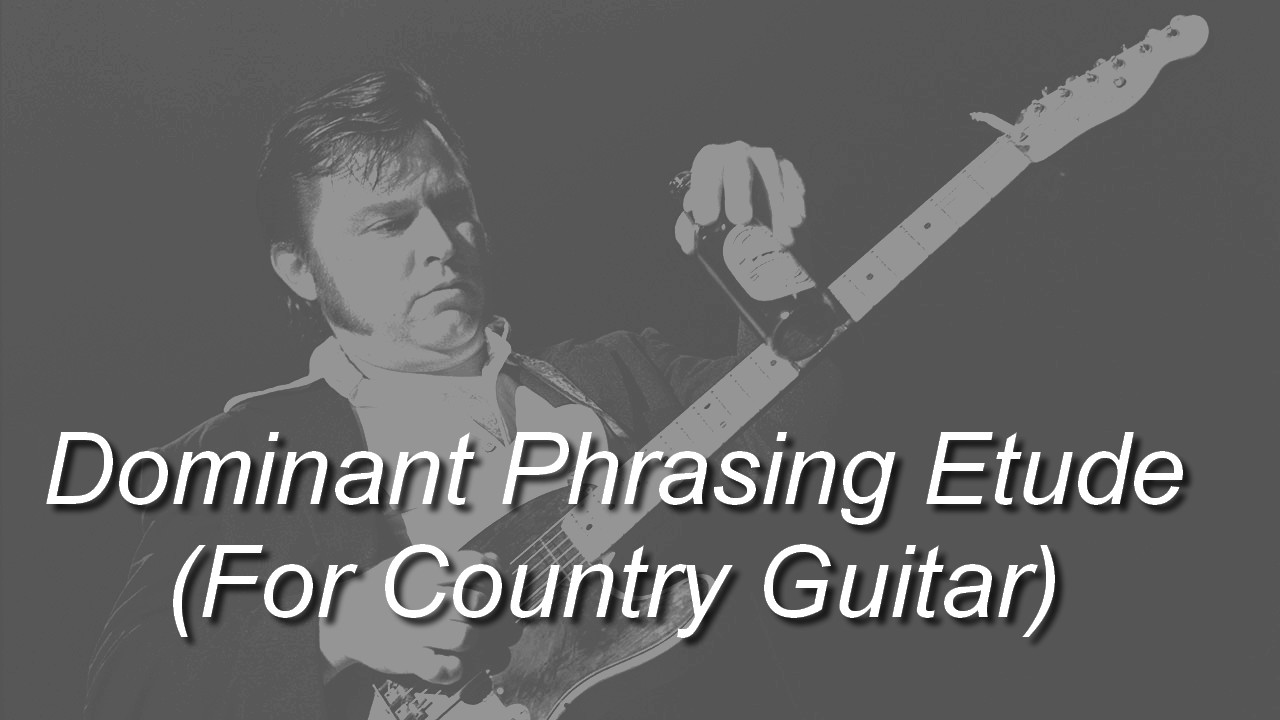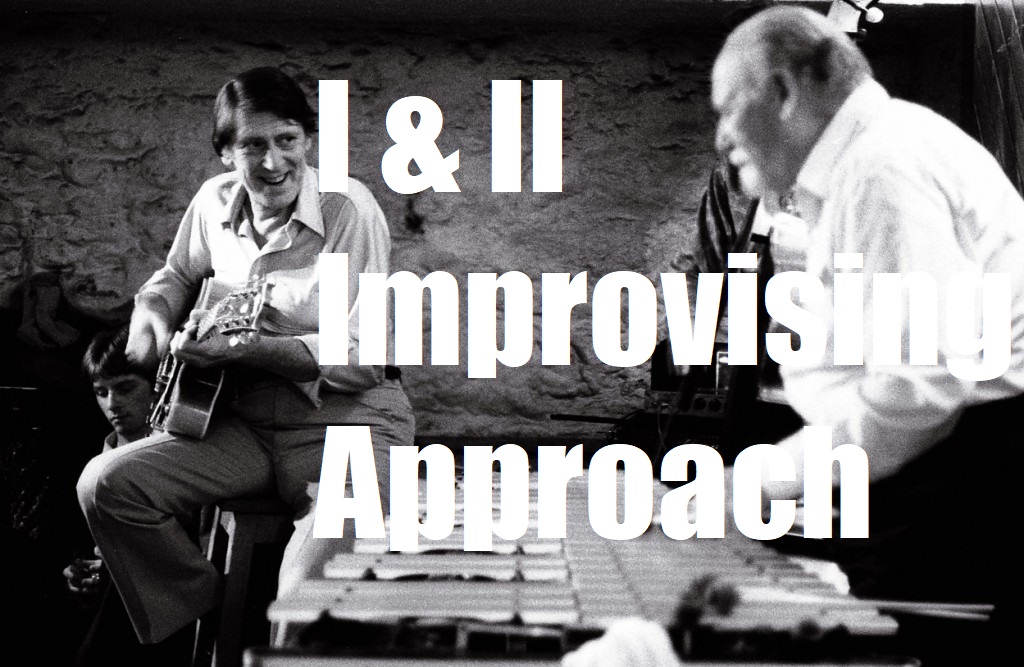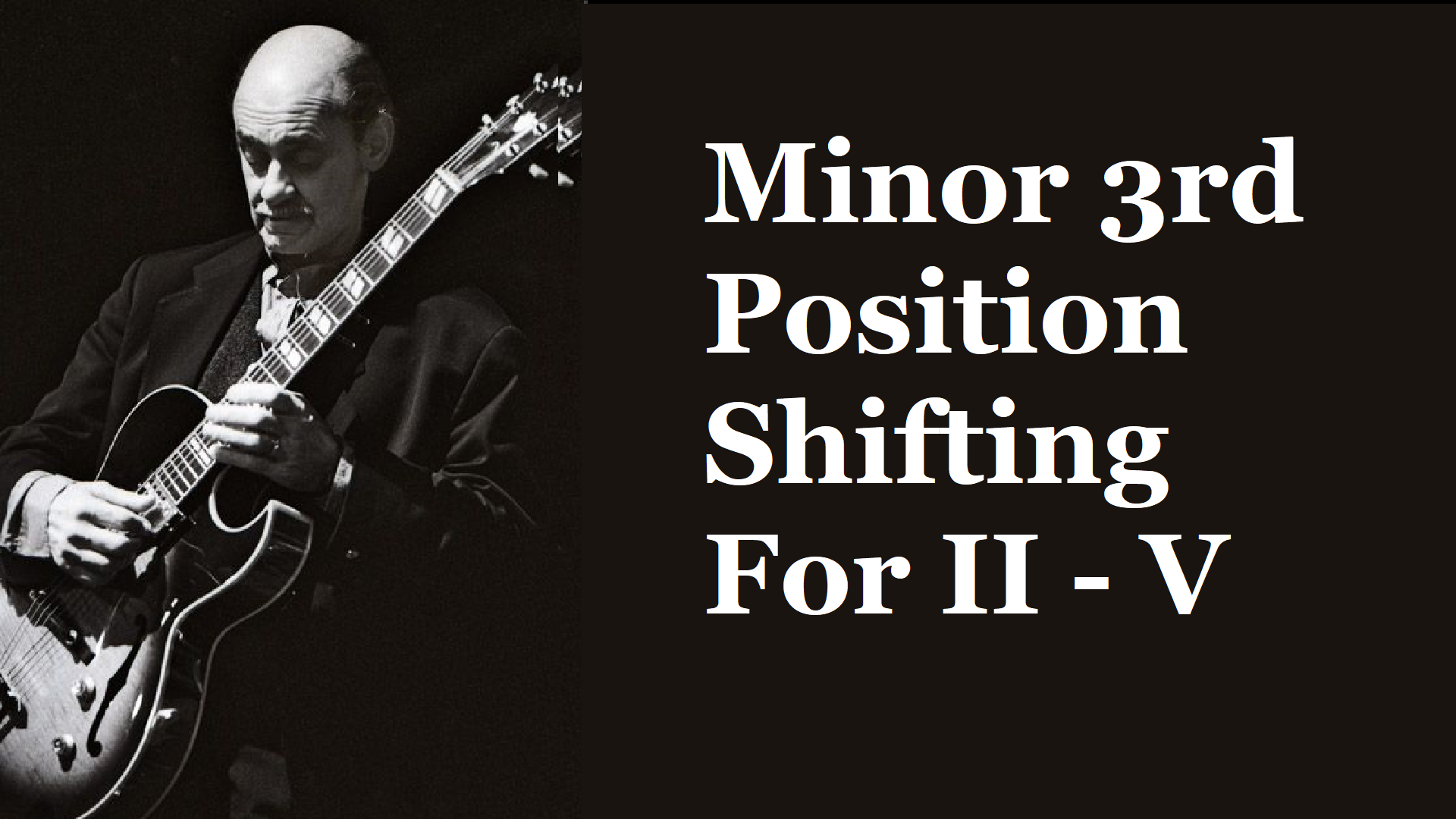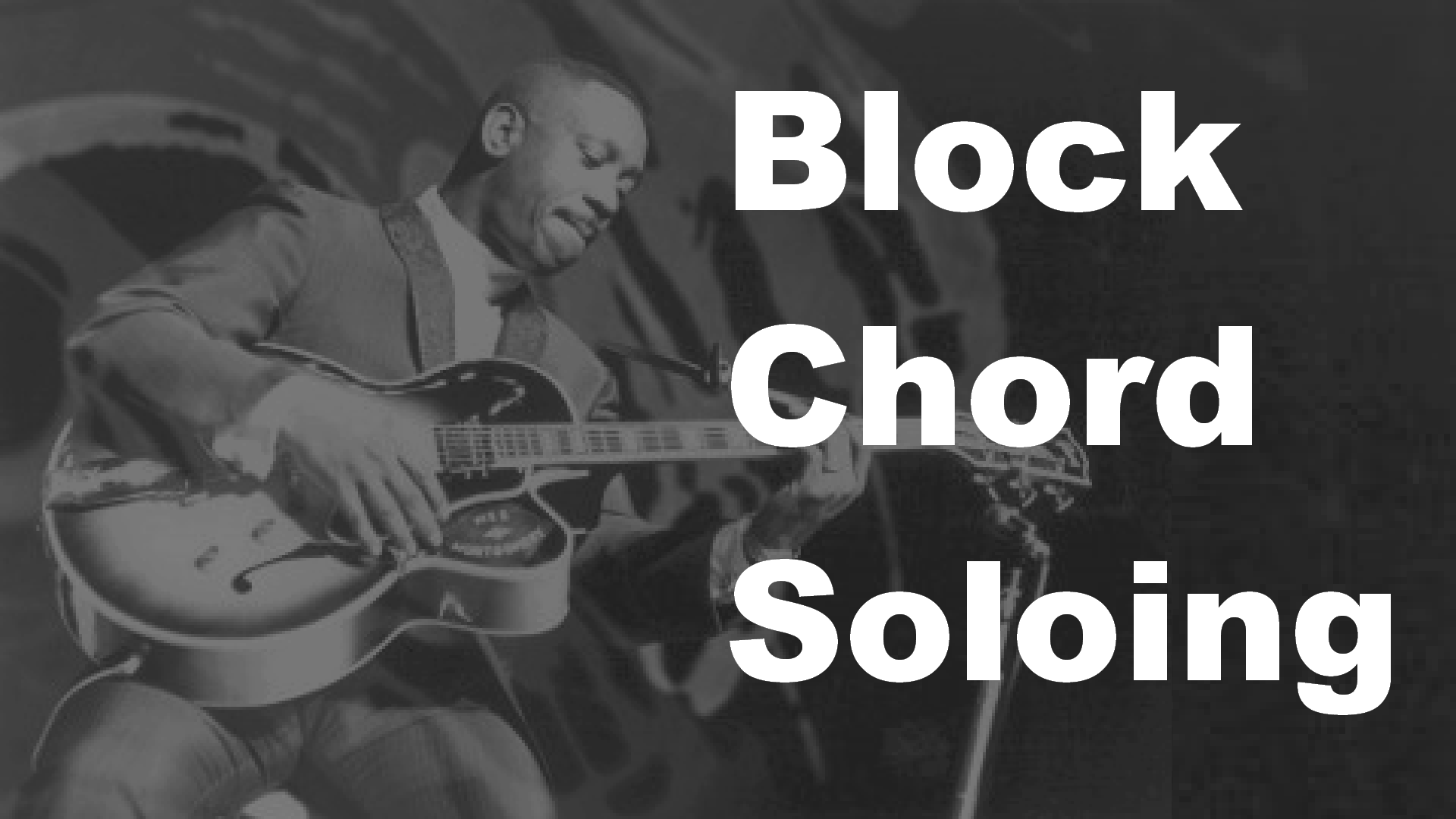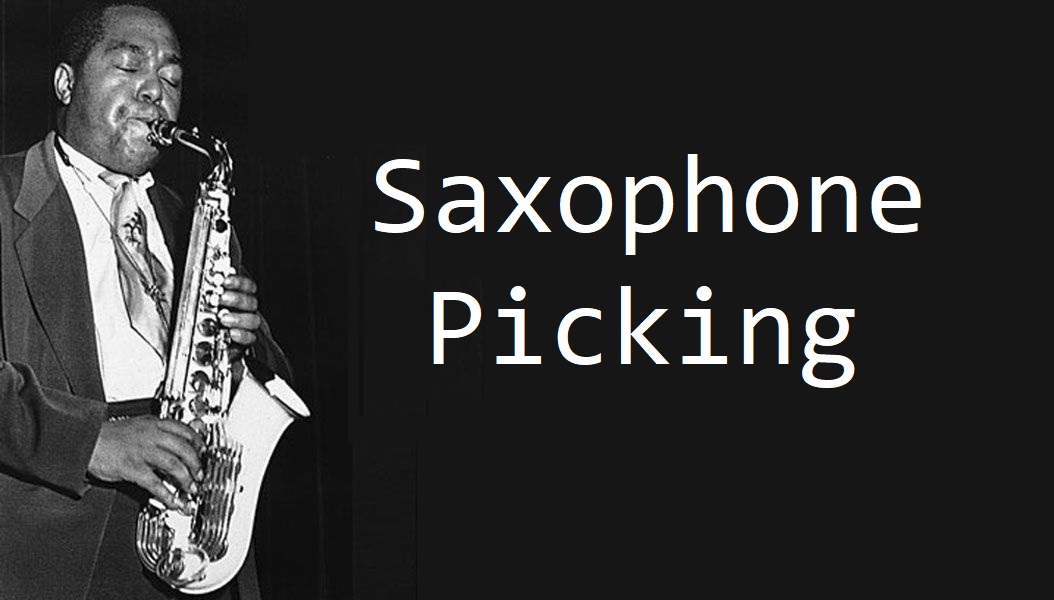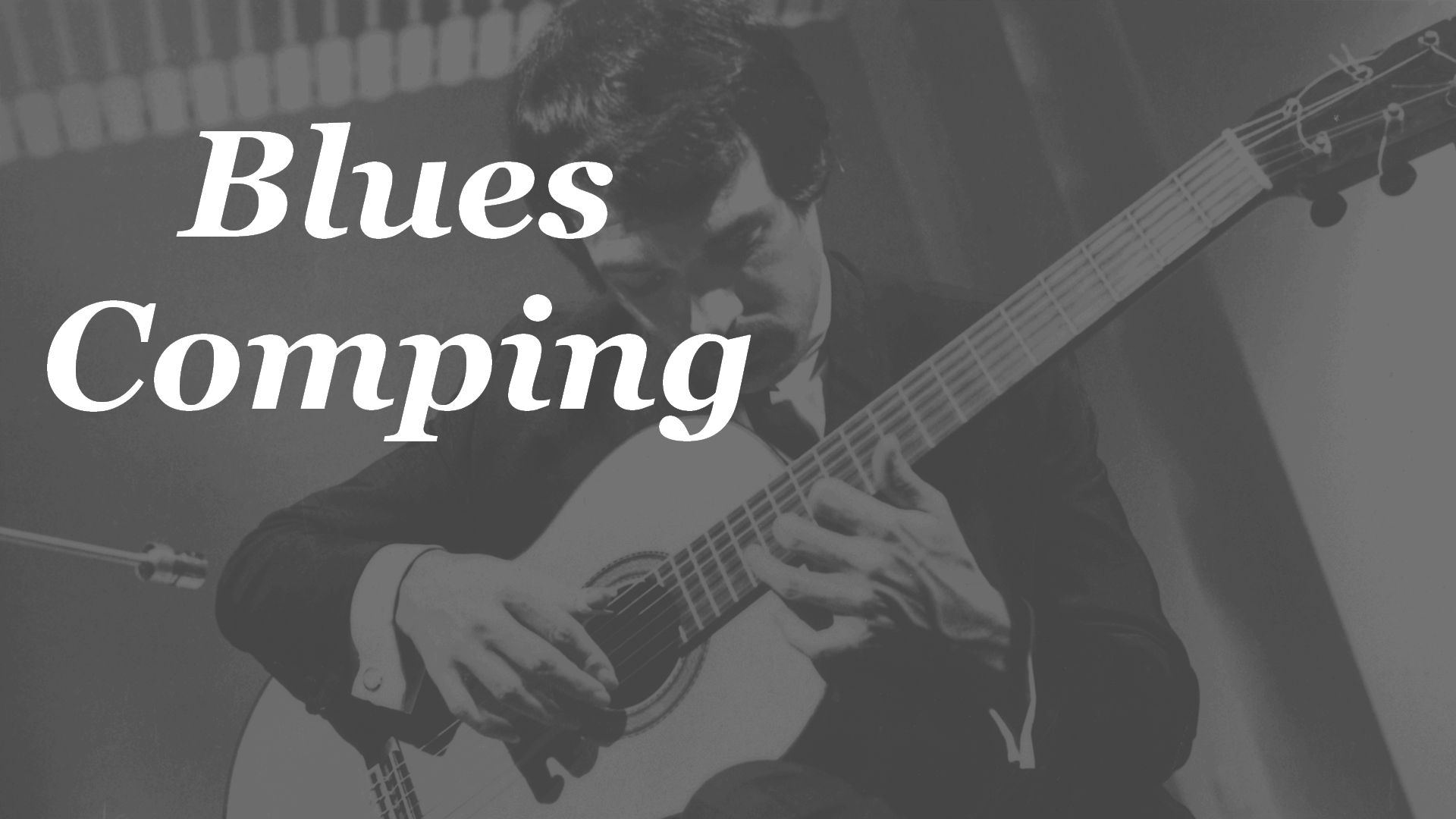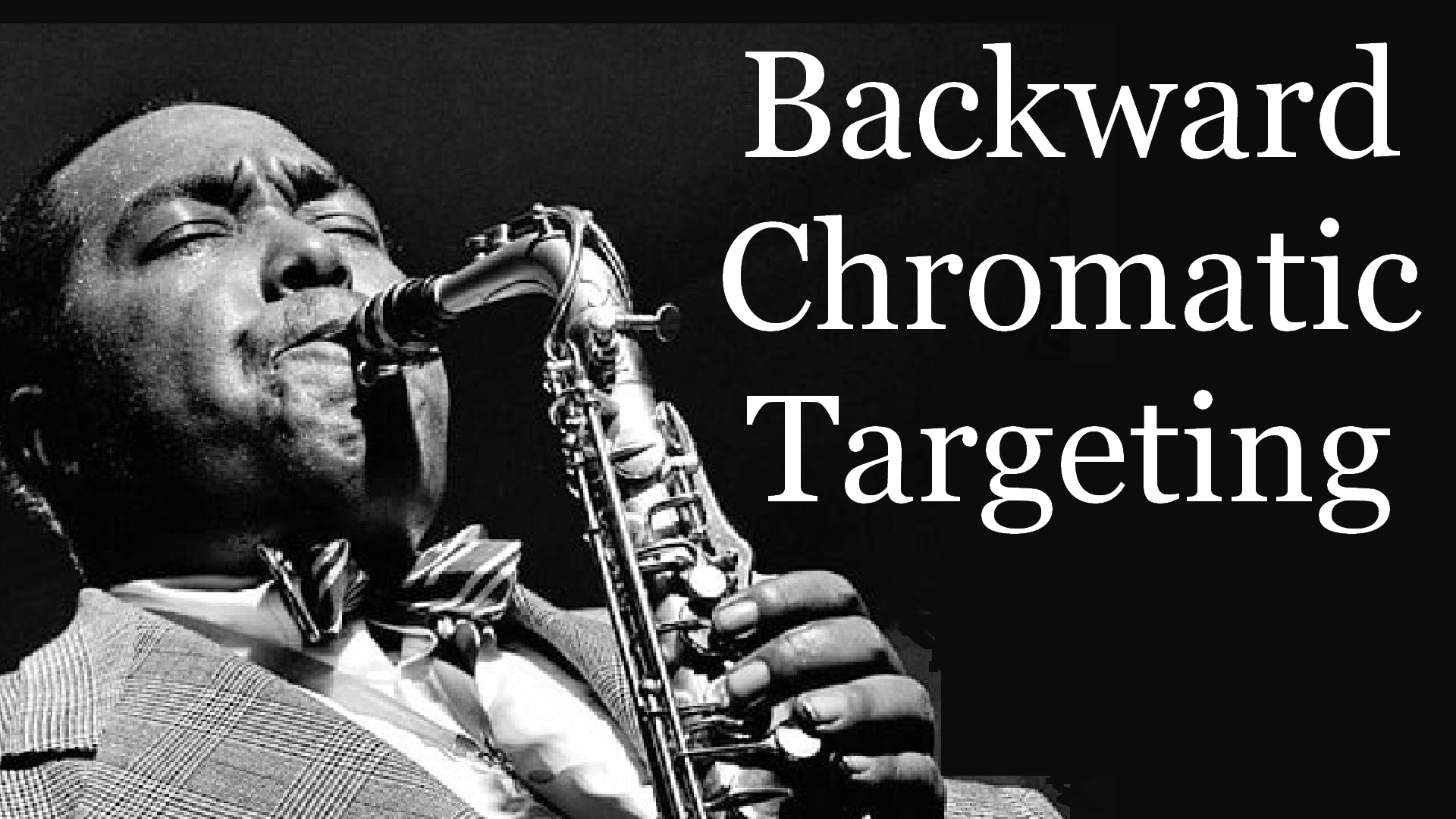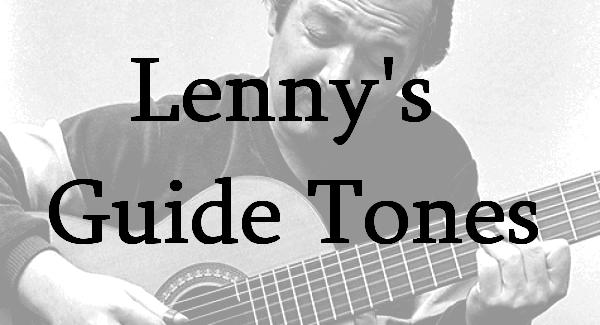
Lenny Breau is without any doubt one of the most original jazz guitarist. A lot can be said on his unique playing style but what stand out the most for many people is how he is using guide tones to emulate piano comping. In this lesson series I will break down how he achieve this unique technique. In the first part of this lesson we will look at the voicings he is using.
Basic Shapes
So let’s start with the dominant voicings, all of these shapes can be viewed from two point of view, Bb7 or E7. Try visualize every voicings according to these two roots. I have written four shapes for every string sets, beginning with the basic shape (3rd & 7th) than those with the color tones. Those shapes will constitute the major part of the voicings used in this playing style.
5th & 4th strings:

4th & 3rd strings:

6th & 5th strings:

Here’s the major shapes;
- 1st bar show the basic voicings (3rd & 7th)
- 2nd bar show the quartal (69) voicings
- 3rd bar show alternative shapes Lenny Breau is using sometime

Same for the minor shapes;
- 1st bar show the basic voicings (3rd & 7th)
- 2nd bar show the quartal (m11) voicings
- 3rd bar show alternative shapes Lenny Breau is using sometime

Half diminished shapes are very similar to minor shapes except when adding the 5th as you can see in second bar. Those particular voicings aren’t very finger friendly. Note that, most of the time Lenny is using normal minor 7 shapes or substituting for an altered dominant shape instead of playing half diminished chords.

Inside voice leading
The shapes I am about to show are very personal to Lenny Breau. Lenny is using them to create inside voice movement. These voicings can be used very efficiently in a more standard comping situation. You can check how I am using them in my ‘Blues Comping’ lesson.
Bb7:

E7:

Pentatonic
Lenny Breau is sometime deriving shapes from pentatonic scale. Here’s the shapes for the three string sets:

Miscellaneous
Here’s some other shapes Lenny is also using when doing his particular piano comping style.

In the next part of this lesson we will look at many examples in various context; II-V, minor II-V & turns.
Support me on Patreon to access this lesson’s PDF file and help me keep the content coming!

